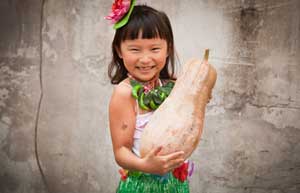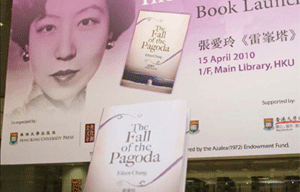Chongqing's most delicious (hot) export
Updated: 2011-10-06 08:05
By Tan Zongyang (China Daily)
|
|||||||||
|
The hotpot is almost synonymous with the city, but after leaving home, it had to adapt to local tastes. Provided to China Daily |
Talk to a Chongqing native about their home, and you'll soon find out the three things they are proud of - the pretty girls, the city's night scenes and the charms of a century-old local delicacy, the hotpot.
Chongqing hotpot is famous for its tongue-numbing peppery taste. Traditionally, it is served in an iron pot that is divided into a grid, placed over heat. Within the grid, the red, spicy and savory soup is kept on the boil, bubbling gently as diners dip their choice of food into the pot to cook.
This dish has woven its magic across the country, and captured a loyal following far from its native province. It has become Chongqing's most famous export.
The success of the hotpot is no secret. It is popular simply because it is both delicious and affordable. This is food for the people from the grassroots.
According to historical records, the hotpot first appeared in Chongqing during the reign of the Emperor Daoguang (1821-1850) of the Qing Dynasty. It was originally the food of boatmen and porters along the Yangtze River.
Being poor, these original gourmets used the poorer cuts of meat and offal such as liver and tripe. To get rid of any pungent smells, they flavored the cooking broth with a lip-searing spice mix of peppers and Sichuan peppercorns. Gradually, this dish gained popularity and spread westward to Sichuan. And as communications improved, it went nationwide.
But eating hotpot in Chongqing used to be very different from having it any other place in China. One big difference is that the local restaurants re-used the bubbling soup base repeatedly. For the local Chongqing people, to cook food in the recycled soup base was perfectly acceptable. In fact they considered the aging soup to be more delicious and felt that it was sanitized by the repeatedly boiling anyway.
Diners in other cities felt differently. They are uncomfortable about dipping into someone else's leftover soup and now, that is a thing of the past even for Chongqing. The Chongqing Hotpot Association decided to ban restaurants in the city from using recycled stock from August, and the decision ignited public debate, but put an end to a longtime culinary tradition.
The dining ambience is another big difference. In other cities, hotpot restaurants are normally chain outlets, with dining areas uniformly decorated and air-conditioned.
In Chongqing, however, you can find hotpot restaurants or stalls anywhere and everywhere that has room for a few tables, even in the open.
In fact, Chongqing diners like eating al fresco. Many famous food stalls, such as those in Nanbin Road, Shuguang Road and even the smaller streets in the bustling Jiefangbei Central Business District all offer hotpots.
Here, it is a busy, bustling atmosphere, with loud talk and drinking games. The hot pot makes Chongqing as vigorous as its bubbling soup.
When the hotpot goes abroad to other Chinese cities, both its heat and the ingredients are adjusted to local tastes. For example, Chongqing people do not eat mutton, which is more popular in the Mongolian hotpots. They prefer the chewy duck intestines, the tofu-like pig's brains and the slightly crunchy beef esophagus that often appear on their hotpot platters. These disappear when the dish is exported.
For Chongqing people, no matter how far they go, how successful their careers are or how much money they have made, they can never have too many hotpot meals. When they are perspiring with the heat, when their tongues and lips go numb from the spiciness, this is when they remember family, friends and hometown best.
You can contact the writer attanzongyang@chinadaily.com.cn.
China Daily
(China Daily 10/06/2011 page9)











